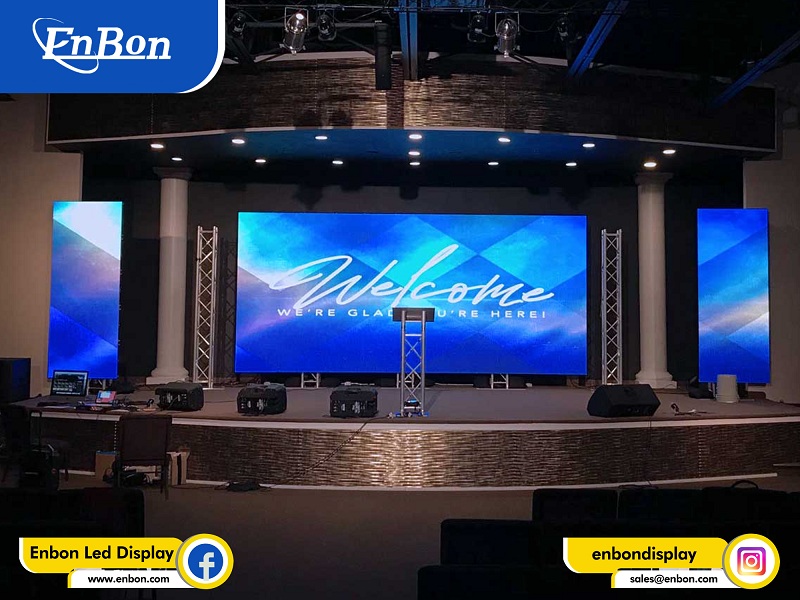In recent years, it has been trendy to make LED screens brighter. This is because brighter screens are seen as more visible and, therefore, better for advertising and other uses. But is it really good or not? Many of you may not be familiar with the demerits of bright screens.
First of all, make it clear that bright LEDs are not better overall because of the large drive current needed for high-brightness LED screens. Furthermore, it is also not good for the environment. However, some more drawbacks to using brighter LED screens are mentioned below.
We already know the benefits of bright LED screens, such as being more eye-catching, grabbing, instantly grabbing people's attention, and much more.
Overall, brighter LED screens have some advantages, but there are also some significant drawbacks to consider. Let's take a look at these drawbacks of bright LED screens.

● One problem is that brighter screens can be harder on the eyes. This is especially true if the screen is not at a comfortable viewing distance. The brightness can cause eye strain and even headaches in some people.
● Another problem with brighter screens is that they can wash out the colors. This can make it difficult to read text or see images clearly. Brightness can also cause the image to appear fuzzy.
● Finally, brighter screens can use more energy. This means that they are not as environmentally friendly as they could be.
● One issue with using LEDs to create brighter displays is that they can cause eye strain. This is because the brightness of an LED display can be quite intense, and looking at a bright screen for extended periods of time can be taxing on the eyes. In addition, the blue light emitted by LEDs can also contribute to eye strain and fatigue.
● Another issue with brighter LED screens is that they can create a "flicker" effect. This is because the brightness of an LED can fluctuate very rapidly, and this can cause a strobing effect that can be quite bothersome. In addition, this flickering can also cause headaches in some people.
● Brighter screens can drain battery life faster. If you're using your device in an environment where you need to conserve battery power, a brighter screen will eat up power more quickly.
● Brighter screens can wash out colors. If you're looking at a bright screen in a well-lit room, the colors may appear less vibrant than they would on a less bright display.
● Brighter screens can cause reflections. If you're using your device in a sunny or brightly lit room, the bright screen can cause reflections that make it difficult to see the screen.
● Brighter screens can be less energy-efficient. While LED screens are more energy-efficient than traditional LCD screens, the brighter the LED screen, the more power it will consume.
So, while brighter LED displays may be more eye-catching, they are not necessarily the best choice for everyone. If you are suffering problems such as eye strain or headaches, you may want to avoid LED displays or limit your exposure to them.
Many of you are unfamiliar with the answer to the query mentioned above. This section will discuss how to choose brightness for a light-emitting diode display screen. The brightness level depends upon the application scenarios and place of installation.
For which purpose you are going to use the display screen, decide the brightness level of the LED display screen. For indoor purposes, the level of brightness of an LED screen is lower as compared to outdoor or semi-outdoor purposes.
● It is good to choose the LED screen with a brightness of less than 1000nits for indoor operation.
● In case of outdoor operation, choose a screen having brightness in the range of above 5000 nits.
● At the same time, for semi-outdoor operation, it is good to purchase a display screen having brightness in the range of 3000 to 5000 nits.
The brightness level depends upon the project's purpose and the place of installation. The brightness of the display is not fixed; it varies according to indoor and outdoor applications. You can better understand this with the following recommended value:
● In the case of advertising, the applicable brightness is in the range of 600 to 1000 nits.
● For document presentation, the applicable brightness is 200 to 300 nits.
● For the video playback, the brightness level should be approximately 400 to 600 nits.

Are you looking for a platform that offers high-quality products? Fortunately, we are here to fulfill this demand with 100%guarantee of performance and quality of the display screen. If you are still confused about your query, is the brighter LED screen better? Then don't worry. Please consult with us. We will guide you in a more direct way that clears your mind well. You can also visit our site to learn more about Enbon LED display products. It is always a wise decision to invest in Enbon display products!
Now you got it why a brighter LED display is not good to consider. No doubt that a bright LED screen can be more enticing. But the proper brightness level depends upon the purpose of the usage of a light-emitting diode display screen. For indoor and outdoor applications, we recommend different brightness levels.
But always remember that excessive brightness is not good for eye health and will also be a waste of resources. Brighter screens can be harder on the eyes. If you're looking at a bright screen for extended periods of time, it can cause eye strain and fatigue.
Moreover, high brightness will cause environmental pollution and require a large current. Display screens with high brightness are also not energy efficient! If you need more guidance about the LED screen, comment below. We will answer you as soon as possible.